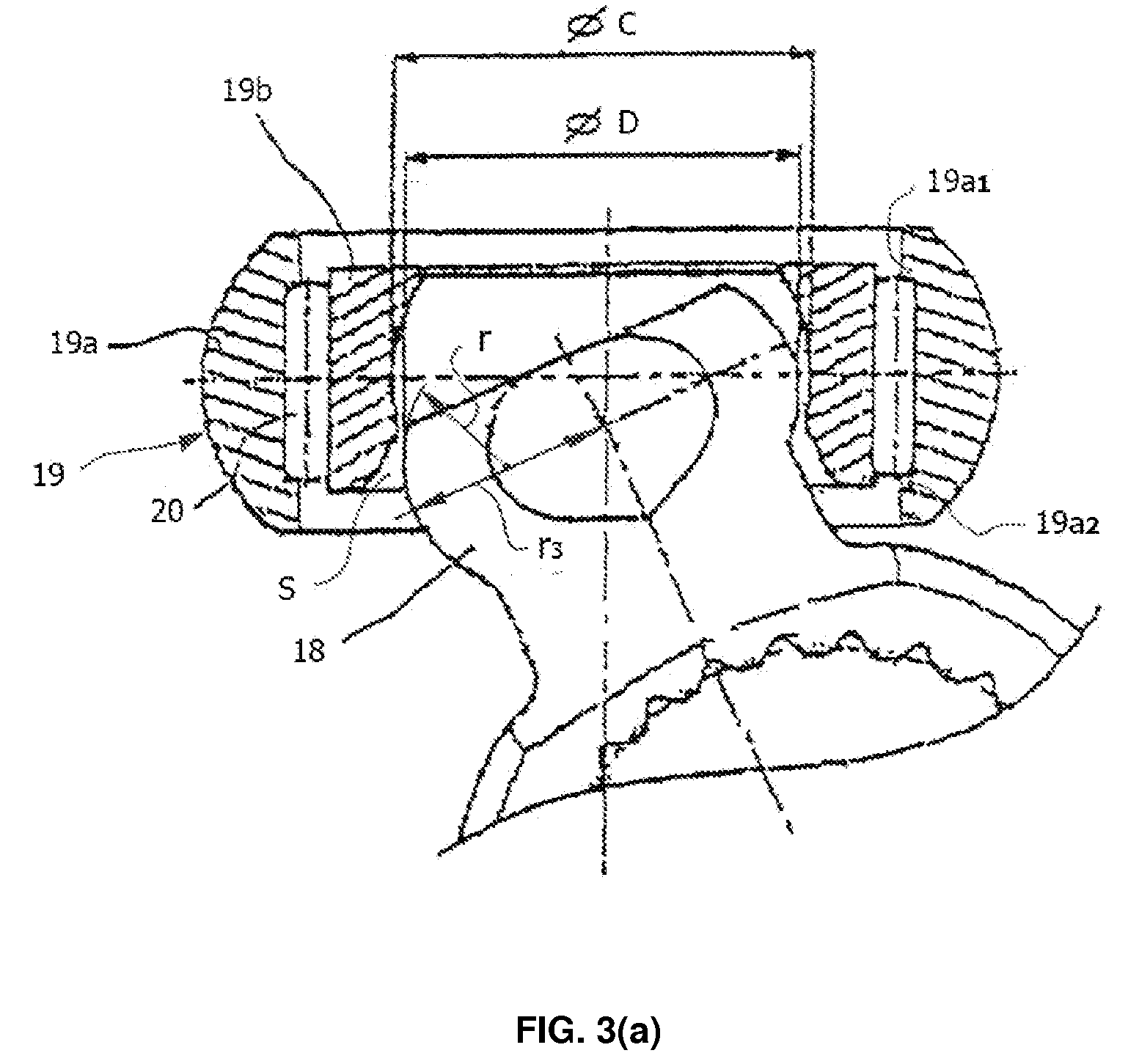Constant Velocity Joint of Tripod Type
- Summary
- Abstract
- Description
- Claims
- Application Information
AI Technical Summary
Benefits of technology
Problems solved by technology
Method used
Image
Examples
first embodiment
[0083]FIG. 5 shows cross-sectional views of a tripod joint constant velocity joint 1 according to the present invention; in which FIG. 5(a) is a cross-sectional view taken vertical to the second rotating shaft, and FIG. 5(b) is a side cross sectional view taken in an axial direction.
[0084]A tripod joint 1 shown in FIG. 5 comprises a hollow cylindrical housing 2 with one end defining an opening, and the other end secured to an end of a first rotating shaft 9 serving as a drive shaft or the like, and a tripod secured at one end of a second rotating shaft 8 which serves as a driven shaft or the like on the wheel side. Three grooves 10 are formed on the inner surface of the housing 2 in a configuration axially extending and equally spaced about the longitudinal axis of the housing. The grooves 10 are recessed from the inner surface outwardly in radial direction of the housing 2.
[0085]A tripod 7 is secured at one end of a second rotating shaft 8 with a ring-type boss 11 for supporting th...
second embodiment
[0096]FIG. 6 illustrates the invention in which each trunnion 6 has a pair of cylindrical protrusions 6a with a diameter ΦA. The two protrusions 6a are disposed in the X-X direction of receiving a load and respectively protruded along the axis normal to the axis of the trunnion 6 by a height H1. The two protrusions 6a together define a generally spherical end surface with a diameter ΦD. Each trunnion 6 includes a pair of flat surfaces 6b in the Z-Z direction of not receiving a load, respectively, in order to diminish the spin moment and make grease flow easily in axial and circumferential direction and for enhancing an initial lubrication of the joint.
[0097]With reference to FIG. 7, the third embodiment is described herein. This embodiment is similar to the first and second embodiments described above. The difference of this embodiment shown in FIG. 7 from the above embodiments is that the central portion (ΦA1) of the spherical surface of the cylindrical protrusion 6a protruded from...
fourth embodiment
[0098]With reference to FIG. 8, the fourth embodiment is described herein. This embodiment is also very similar to the above described embodiment as shown in FIG. 6. The difference of this embodiment from that shown in FIG. 6 is that the trunnion 6 has a cylindrical protrusion 6a in the X-X direction of receiving the load, however, the protrusion 6a having an elliptical shape which defines a longer diameter B2 and shorter diameter A2.
PUM
| Property | Measurement | Unit |
|---|---|---|
| Length | aaaaa | aaaaa |
| Angle | aaaaa | aaaaa |
| Diameter | aaaaa | aaaaa |
Abstract
Description
Claims
Application Information
 Login to View More
Login to View More - R&D
- Intellectual Property
- Life Sciences
- Materials
- Tech Scout
- Unparalleled Data Quality
- Higher Quality Content
- 60% Fewer Hallucinations
Browse by: Latest US Patents, China's latest patents, Technical Efficacy Thesaurus, Application Domain, Technology Topic, Popular Technical Reports.
© 2025 PatSnap. All rights reserved.Legal|Privacy policy|Modern Slavery Act Transparency Statement|Sitemap|About US| Contact US: help@patsnap.com



